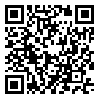BibTeX | RIS | EndNote | Medlars | ProCite | Reference Manager | RefWorks
Send citation to:
URL: http://salmandj.uswr.ac.ir/article-1-305-en.html
Objectives: The purpose of this study was to determine barriers and motivators of physical activity in older adults.
Methods & Materials: In this cross sectional study 153 older adults were participated through classified randomized clustering method. The questionnaires were completed in face to face interview. Descriptive statistics and U Mann Whitney test were used to analyzing data.
Results: Main motivators of physical activity were: independence, self efficiency, prevention of fatigue, purchasing, sense of authority and necessity of exercise for elderly that all of them are health related factors. Main barriers were chronic disease, handicap and pain. Men show higher grade in recreational, physical environment and social factor as motivator (P value in orderly 0.000, 0.003 and 0.022). Women have greater barrier in health related factor and social environment (P-value in orderly 0.000 and 0.022).
Conclusion: Based on our findings, the best way for extension of physical activity is introducing their effect on physical, mental and cognitive health. For reducing barriers the most important plan is presenting elderly specific exercise programs with experts.
Received: 2009/09/20 | Accepted: 2009/12/10 | Published: 2010/01/01
| Rights and permissions | |
 |
This work is licensed under a Creative Commons Attribution-NonCommercial 4.0 International License. |





